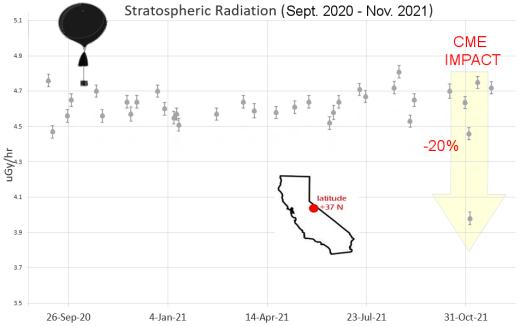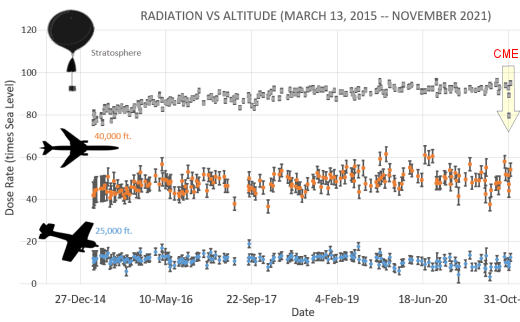| Asteroid | Date(UT) | Miss Distance | Velocity (km/s) | Diameter (m) |
| 2022 GP | 2022-Apr-08 | 2.3 LD | 17.6 | 19 |
| 2022 GX | 2022-Apr-08 | 3.8 LD | 12.9 | 13 |
| 2022 GG2 | 2022-Apr-08 | 1.9 LD | 5.5 | 6 |
| 2022 GK2 | 2022-Apr-08 | 4 LD | 25 | 26 |
| 2022 GK4 | 2022-Apr-09 | 7.4 LD | 5.4 | 11 |
| 2022 GT | 2022-Apr-09 | 12.4 LD | 4.9 | 16 |
| 2022 GY1 | 2022-Apr-09 | 6.8 LD | 10.5 | 35 |
| 2022 GF3 | 2022-Apr-09 | 0.6 LD | 17.4 | 9 |
| 2022 FU4 | 2022-Apr-09 | 8.3 LD | 4.7 | 13 |
| 2022 GV2 | 2022-Apr-09 | 8.1 LD | 7.8 | 9 |
| 2022 GV3 | 2022-Apr-10 | 16.9 LD | 5.2 | 14 |
| 2022 GE2 | 2022-Apr-10 | 12.1 LD | 9.1 | 15 |
| 2022 GW2 | 2022-Apr-10 | 7.7 LD | 7.7 | 9 |
| 2020 GH1 | 2022-Apr-10 | 17.7 LD | 7.2 | 27 |
| 2022 GN3 | 2022-Apr-10 | 1.1 LD | 7.3 | 5 |
| 2022 FT3 | 2022-Apr-10 | 19.8 LD | 11 | 23 |
| 2022 GO2 | 2022-Apr-10 | 3 LD | 9 | 10 |
| 2017 TO2 | 2022-Apr-10 | 17.9 LD | 11.6 | 78 |
| 2022 GG3 | 2022-Apr-11 | 1.5 LD | 11.4 | 6 |
| 363599 | 2022-Apr-12 | 19.3 LD | 24.5 | 218 |
| 2022 GU2 | 2022-Apr-12 | 4.8 LD | 11.8 | 18 |
| 2022 GD3 | 2022-Apr-12 | 8.1 LD | 8.6 | 40 |
| 2022 GP3 | 2022-Apr-13 | 17.1 LD | 7.5 | 17 |
| 2022 GM4 | 2022-Apr-13 | 1.5 LD | 23.1 | 13 |
| 2022 GS3 | 2022-Apr-13 | 2.8 LD | 9.7 | 51 |
| 2022 GL4 | 2022-Apr-14 | 2.9 LD | 13.6 | 15 |
| 2022 FR3 | 2022-Apr-14 | 18.3 LD | 8.3 | 92 |
| 2022 GR2 | 2022-Apr-16 | 10.4 LD | 26.6 | 71 |
| 2022 GG5 | 2022-Apr-16 | 11.7 LD | 10.7 | 25 |
| 2022 GL3 | 2022-Apr-16 | 2.1 LD | 5.4 | 13 |
| 2022 GX4 | 2022-Apr-17 | 4.3 LD | 16.5 | 25 |
| 2020 TQ6 | 2022-Apr-18 | 13.4 LD | 15.4 | 43 |
| 2022 GJ4 | 2022-Apr-18 | 3.8 LD | 15.6 | 19 |
| 2022 FN3 | 2022-Apr-19 | 15.1 LD | 6.3 | 39 |
| 2022 GU3 | 2022-Apr-22 | 4.6 LD | 8.7 | 25 |
| 2017 UR2 | 2022-Apr-22 | 19.4 LD | 9.3 | 10 |
| 2020 VN1 | 2022-Apr-25 | 19.3 LD | 2.3 | 9 |
| 418135 | 2022-Apr-28 | 8.5 LD | 10.4 | 466 |
| 2017 XO2 | 2022-May-01 | 18.8 LD | 12.4 | 125 |
| 2017 HG1 | 2022-May-04 | 18.2 LD | 6 | 11 |
| 467460 | 2022-May-09 | 14.9 LD | 11.3 | 513 |
| 2019 JE | 2022-May-11 | 4.9 LD | 7.2 | 20 |
| 2012 UX68 | 2022-May-15 | 2.8 LD | 8.2 | 54 |
| 388945 | 2022-May-15 | 15 LD | 8.2 | 290 |
| 2013 UX | 2022-May-17 | 16.8 LD | 16.3 | 141 |
| 2021 WY | 2022-May-18 | 16.9 LD | 9 | 65 |
| 7335 | 2022-May-27 | 10.5 LD | 13.1 | 1058 |
| 2021 KO2 | 2022-May-30 | 3.1 LD | 14.8 | 9 |
| 2020 DA4 | 2022-Jun-01 | 5.5 LD | 8.9 | 26 |
| 2021 GT2 | 2022-Jun-06 | 9.5 LD | 7.5 | 50 |
| 2018 LU2 | 2022-Jun-09 | 14.8 LD | 10.7 | 16 |
Notes: LD means "Lunar Distance." 1 LD = 384,401 km, the distance between Earth and the Moon. 1 LD also equals 0.00256 AU. MAG is the visual magnitude of the asteroid on the date of closest approach. | | Cosmic Rays in the Atmosphere |
SPACE WEATHER BALLOON DATA: Almost once a week, Spaceweather.com and the students of Earth to Sky Calculus fly space weather balloons to the stratosphere over California. These balloons are equipped with sensors that detect secondary cosmic rays, a form of radiation from space that can penetrate all the way down to Earth's surface. Our monitoring program has been underway without interruption for 7 years, resulting in a unique dataset of in situ atmospheric measurements.
Latest results (Nov. 2021): Our balloons have just measured a sudden drop in atmospheric radiation. It happened during the strong geomagnetic storms of Nov. 3-4, 2021. Here are the data:

This is called a "Forbush decrease," named after American physicist Scott Forbush who studied cosmic rays in the early 20th century. It happens when a CME from the sun sweeps past Earth and literally pushes cosmic rays away from our planet. Radiation from deep space that would normally pepper Earth's upper atmosphere is briefly wiped out.
We have measured Forbush decreases before. For example, here's one from Sept. 2014. The Forbush Decrease of Nov. 3-4, 2021, was the deepest in the history of our 7-year atmospheric monitoring program. Radiation levels in the stratosphere over California dropped nearly 20%, more than doubling the previous record from our dataset.
En route to the stratosphere, our sensors also pass through aviation altitudes, so we can sample radiation where planes fly. This plot shows how the Forbush decrease was restricted to the stratosphere; it did not affect lower levels of the atmosphere:

The dose rates shown above are expressed as multiples of sea level. For instance, we see that boarding a plane that flies at 25,000 feet exposes passengers to dose rates ~10x higher than sea level. At 40,000 feet, the multiplier is closer to 50x. The higher you fly, the more radiation you will absorb.
.Who cares? Cosmic rays are a surprisingly "down to Earth" form of space weather. They can seed clouds, trigger lightning, and penetrate commercial airplanes. According to a study from the Harvard T.H. Chan school of public health, crews of aircraft have higher rates of cancer than the general population. The researchers listed cosmic rays, irregular sleep habits, and chemical contaminants as leading risk factors. Somewhat more controversial studies (#1, #2, #3, #4) link cosmic rays with cardiac arrhythmias and sudden cardiac death.
.Technical notes: The radiation sensors onboard our helium balloons detect X-rays and gamma-rays in the energy range 10 keV to 20 MeV. These energies span the range of medical X-ray machines and airport security scanners.
Data points in the first graph ("Stratospheric Radiation") correspond to the peak of the Regener-Pfotzer maximum, which lies about 67,000 feet above central California. When cosmic rays crash into Earth's atmosphere, they produce a spray of secondary particles that is most intense at the entrance to the stratosphere. Physicists Eric Regener and Georg Pfotzer discovered the maximum using balloons in the 1930s and it is what we are measuring today.
| | The official U.S. government space weather bureau |
| | The first place to look for information about sundogs, pillars, rainbows and related phenomena. |
| | Researchers call it a "Hubble for the sun." SDO is the most advanced solar observatory ever. |
| | 3D views of the sun from NASA's Solar and Terrestrial Relations Observatory |
| | Realtime and archival images of the Sun from SOHO. |
| | information about sunspots based on the latest NOAA/USAF Active Region Summary |
| | from the NOAA Space Environment Center |
| | fun to read, but should be taken with a grain of salt! Forecasts looking ahead more than a few days are often wrong. |
| | from the NOAA Space Environment Center |
| | the underlying science of space weather |
 | Going above and beyond to provide the best homes listings in the Comox real estate market to keep you up to date and informed |
 | BestCSGOGambling is the best site for everything related to CSGO gambling on the web |
 | To find reviews of new online casino sites in the UK try The Casino DB where there are hundreds of online casino reviews complete with bonuses and ratings. Alternatively, Online-Casinos.xyz is another massive directory of online casinos listing sites for the UK and Worldwide. Casinos that offer Rupees for bonuses are very generous to Indian players. Find the best online casinos in India at AllCasinos.in Looking for a new online casino? Try Casimpo the new site dedicated to making online casino simple, or check out the new Avenger Slots Casino and Ace Online Casino with over 500 online slots and casino games. |
 | One of the most popular casino games is the Book Of Dead Slot based on ancient Egyptian text, you can find all the casinos with spins at bookofdeadslotsites.com. |
 | When looking for casinos to play online when the weather is bad, you can try casino online trucchi for Italian games. If you are not from Finland you can try the Swedish page Svenska casino online to find suitable games, check out svenskacasinoonline.net. Always check your local laws before playing with real money. |
 | Looking for sports betting companies not registered on GamStop? CasinoGap has presented a list of sites not on GamStop available for UK players. Check and bet online! Would you like to bet at sites not using GamStop? Look at a list of NonStopCasino sites for online betting that aren't on GamStop. Top-rated bookmakers ever! |
| | These links help Spaceweather.com stay online. Thank you to our supporters! |
| | | | | | |

